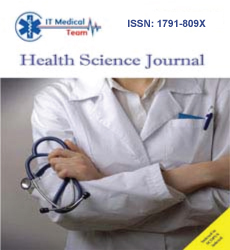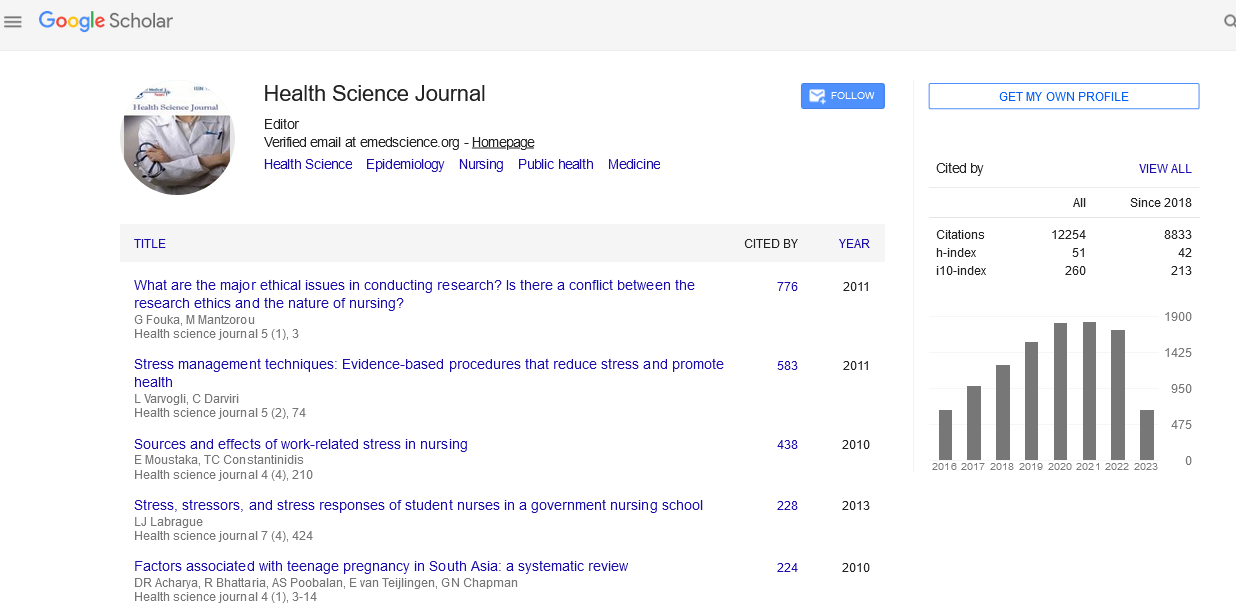Editorial - (2025) Volume 19, Issue 1
The Role of Antioxidants in Mitigating Oxidative Stress-Induced Cardiovascular Damage in Postmenopausal Women
Julien Moreau*
Department of Health Science, Western University, Canada
*Correspondence:
Julien Moreau, Department of Health Science, Western University,
Canada,
Email:
Received: 01-Jan-2025, Manuscript No. Iphsj-25-15523;
Editor assigned: 04-Jan-2025, Pre QC No. Iphsj-25-15523 (PQ);
Reviewed: 16-Jan-2025, QC No. Iphsj-25-15523;
Revised: 21-Jan-2025, Manuscript No. Iphsj-25-15523 (R);
Published:
30-Jan-2025, DOI: 10.36648/1791-809X.19.1.1224
Introduction
Cardiovascular diseases (CVDs) remain the leading cause of morbidity and mortality worldwide and postmenopausal women are particularly vulnerable to developing these conditions [1]. The onset of menopause marks significant changes in a woman’s hormonal and metabolic landscape, one of the most profound being the decrease in estrogen levels. This hormonal shift has been linked to an increase in cardiovascular risk factors such as elevated blood pressure, dyslipidemia, and atherosclerosis. In addition to these factors, oxidative stress plays a pivotal role in the pathogenesis of cardiovascular diseases [2]. Oxidative stress occurs when there is an imbalance between the production of reactive oxygen species (ROS) and the body’s ability to neutralize them with antioxidants. In postmenopausal women, the reduced antioxidant defense system, coupled with increased oxidative stress, contributes significantly to the deterioration of cardiovascular health. This article examines the role of antioxidants in mitigating oxidative stress-induced cardiovascular damage in postmenopausal women and their potential therapeutic benefits [3].
Oxidative Stress and Cardiovascular Damage
Oxidative stress is a key contributor to endothelial dysfunction, a precursor to atherosclerosis, and other cardiovascular abnormalities. It results from the excessive production of ROS, which are highly reactive molecules capable of damaging cellular components such as lipids, proteins, and DNA. In the context of cardiovascular health, ROS contribute to the oxidation of low-density lipoprotein (LDL) cholesterol, leading to the formation of oxidized LDL (oxLDL) [4]. OxLDL is known to promote inflammatory responses, endothelial injury, and plaque formation within the arterial walls, thereby increasing the risk of atherosclerosis and subsequent cardiovascular events like heart attacks and strokes. In postmenopausal women, oxidative stress is exacerbated by a decline in estrogen, a hormone with known antioxidant properties. Estrogen exerts protective cardiovascular effects by enhancing nitric oxide (NO) production, a potent vasodilator that improves endothelial function. With the reduction in estrogen levels post-menopause, there is a decrease in NO bioavailability, leading to endothelial dysfunction and an increase in ROS production. This shift towards oxidative damage is thought to accelerate the development of cardiovascular diseases, making postmenopausal women more susceptible to heart disease [5].
Antioxidants and Their Mechanism of Action
Antioxidants are molecules that counteract oxidative stress by neutralizing ROS and thereby preventing cellular damage. The body naturally produces several antioxidants, including enzymes like superoxide dismutase (SOD), catalase, and glutathione peroxidase, which act as first lines of defense against oxidative damage. Additionally, dietary antioxidants, such as vitamins C and E [6], flavonoids, and carotenoids, contribute to the neutralization of ROS and can be obtained from fruits, vegetables, and other plant-based foods. The antioxidant defense system works through a complex interplay of enzymatic and non-enzymatic pathways that collectively neutralize the harmful effects of ROS. For example, vitamin C (ascorbic acid) donates electrons to neutralize ROS like superoxide radicals, while vitamin E (α-tocopherol) protects cell membranes from lipid peroxidation by scavenging free radicals. Similarly, selenium, through its incorporation into the enzyme glutathione peroxidase, helps to reduce hydrogen peroxide and lipid peroxides, further preventing oxidative damage.
In postmenopausal women, the intake of antioxidants, whether through diet or supplementation, has been shown to improve endothelial function, reduce inflammation, and mitigate some of the cardiovascular risk factors associated with menopause. Antioxidants can enhance the bioavailability of NO, improve vascular reactivity, and reduce the levels of oxidized lipoproteins in the bloodstream. By counteracting oxidative stress, antioxidants thus offer a potential therapeutic strategy to reduce cardiovascular damage and improve cardiovascular health in this high-risk population.
The Role of Antioxidants in Postmenopausal Cardiovascular Health
In postmenopausal women, several studies have investigated the potential role of antioxidants in reducing oxidative stress and improving cardiovascular outcomes. Vitamin E, in particular, has been studied extensively for its ability to inhibit lipid peroxidation and improve endothelial function. However, clinical trials investigating the use of vitamin E supplementation have yielded mixed results, with some studies demonstrating a reduction in cardiovascular events and others showing little to no benefit. These inconsistencies may be attributed to variations in study design, the population studied, and the type of antioxidant used. Similarly, flavonoids, a group of polyphenolic compounds found in fruits, vegetables, and tea, have shown promise in combating oxidative stress and reducing cardiovascular risk factors in postmenopausal women. Flavonoids are known to possess anti-inflammatory and antioxidant properties that can help reduce oxidative damage to the endothelium and improve blood vessel function. In clinical trials, flavonoid-rich foods and supplements have been associated with improved arterial stiffness, lower blood pressure, and reduced levels of markers of oxidative stress. Additionally, the supplementation of coenzyme Q10 (CoQ10), a potent antioxidant that plays a critical role in mitochondrial energy production and protection against oxidative stress, has been explored in postmenopausal women. CoQ10 supplementation has been shown to improve endothelial function, reduce blood pressure, and enhance exercise capacity in women with cardiovascular risk factors. CoQ10 acts by regenerating other antioxidants and reducing ROS production, thus contributing to improved cardiovascular health. While antioxidants show promise in mitigating oxidative stress and cardiovascular damage, their efficacy in preventing cardiovascular events in postmenopausal women requires further investigation. The variability in study results suggests that the beneficial effects of antioxidants may depend on factors such as the type of antioxidant, dosage, duration of supplementation, and the specific cardiovascular outcomes measured.
Synergistic Effects of Antioxidants and Lifestyle Modifications
It is also important to recognize that antioxidants alone may not be sufficient to prevent cardiovascular disease in postmenopausal women. Lifestyle modifications, including regular physical activity, a heart-healthy diet, and weight management, play a crucial role in improving cardiovascular outcomes. A diet rich in antioxidants—such as a Mediterranean-style diet that emphasizes fruits, vegetables, whole grains, nuts, and healthy fats—can complement the protective effects of antioxidant supplementation and further reduce oxidative stress. Regular physical activity is another essential component of cardiovascular health. Exercise has been shown to increase the production of endogenous antioxidants and improve endothelial function, further enhancing the body’s ability to counteract oxidative stress. Moreover, exercise improves cardiovascular risk factors such as blood pressure, lipid profile, and insulin sensitivity, all of which are important in the context of postmenopausal health.
Conclusion
Oxidative stress plays a central role in the pathogenesis of cardiovascular diseases, particularly in postmenopausal women, where hormonal changes exacerbate the production of reactive oxygen species and impair antioxidant defenses. Antioxidants, both enzymatic and non-enzymatic, offer a potential therapeutic strategy to mitigate the cardiovascular damage caused by oxidative stress. While evidence from clinical studies suggests that antioxidants like vitamins C and E, flavonoids, and CoQ10 may help improve endothelial function and reduce oxidative damage, more research is needed to establish their effectiveness in preventing cardiovascular events in postmenopausal women. Incorporating antioxidants through a balanced diet and supplementation, combined with lifestyle interventions such as physical activity and weight management, may provide a holistic approach to improving cardiovascular health in this high-risk population. However, personalized strategies that consider individual health status, risk factors, and preferences will be essential for optimizing cardiovascular outcomes in postmenopausal women.
References
- Zinsstag J, Durr S, Penny M A, Mindekem R, Roth F et al. (2009) Transmission dynamics and economics of rabies control in dogs and humans in an African city. PNAS 106: 14996-15001.
Indexed at, Google Scholar, Crossref
- Taame MH, Abrha B H, Yohannes T A, Abreha T G, Yisehak TR et al. (2017) Control and prevention of rabies through dog vaccination campaigns, public awareness creation and dog population control. Ethiop J vet Sci Anim Prod 1: 9-16.
Google Scholar
- Tenzin (2012) Studies on the epidemiology and control of rabies in Bhutan. PhD Thesis. The University of Sydney, Faculty of Vet Sci Australia.
Google Scholar
- Tortora G J, Funke B R, Case C L (2010) Microbiology an Introduction. 1st ed. Pearson Education Inc, San Francisco, USA 622-624.
Google Scholar
- WHO (2010) Rabies vaccines WHO position paper. Weekly Epidemiological Record 85: 309-320.
Indexed at, Google Scholar
- Yimer E, New aye Selassie B, Teferra G, Mekonnen Y, Bogale Y et al. (2002) Situation of rabies in Ethiopia: a retrospective study 1990-2000. Ethiop J Health Dev 16: 105-112.
Indexed at, Google Scholar, Crossref
Citation: Moreau J (2024) The Role of Antioxidants in Mitigating Oxidative Stress-Induced Cardiovascular Damage in Postmenopausal Women. Health Sci J. Vol. 19 No. 1: 1224.





